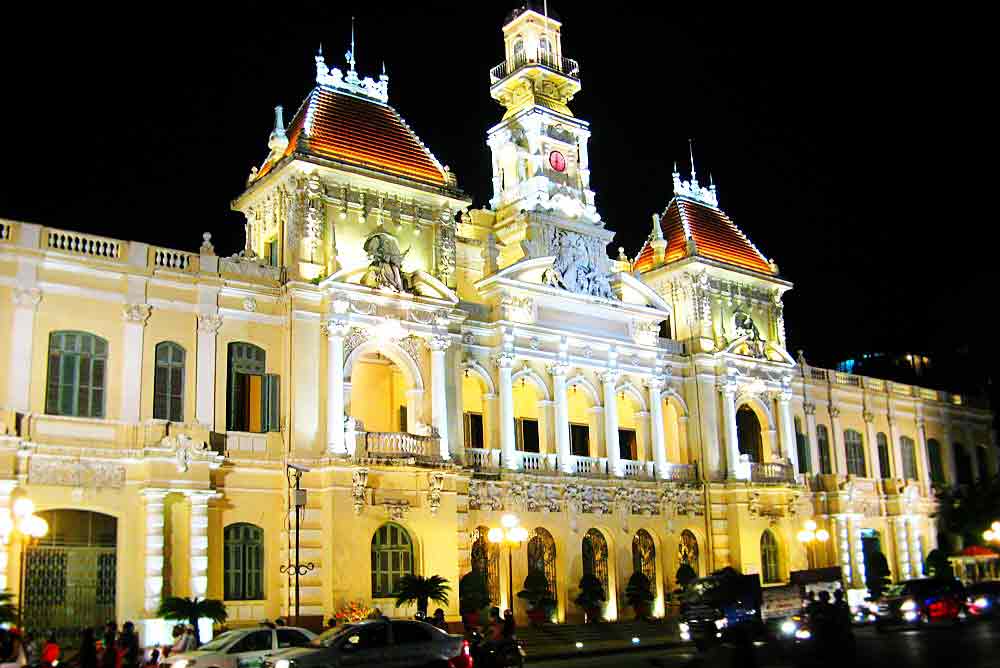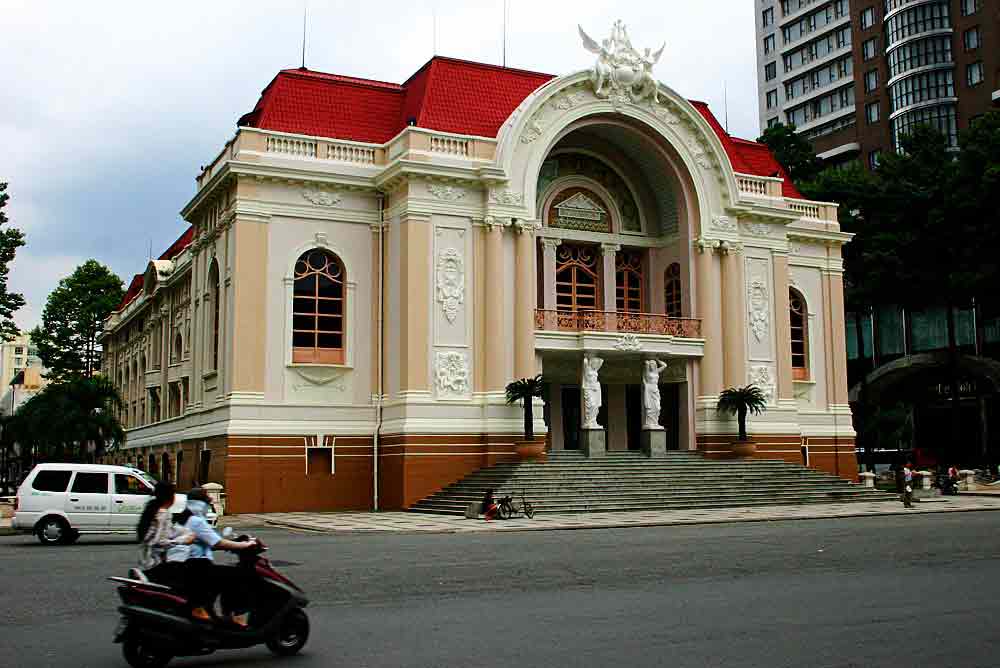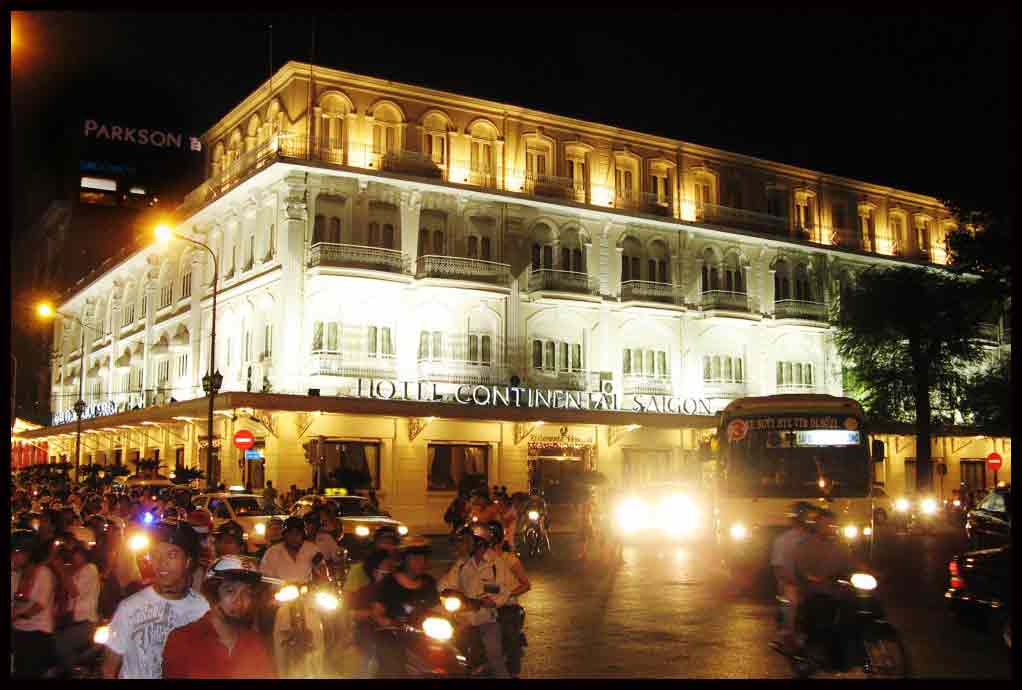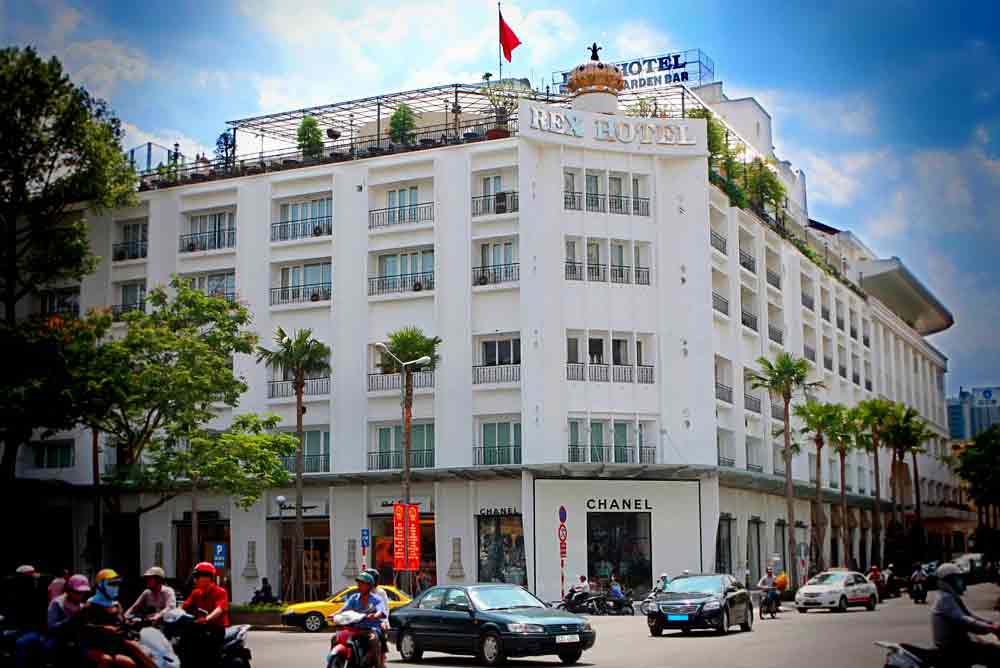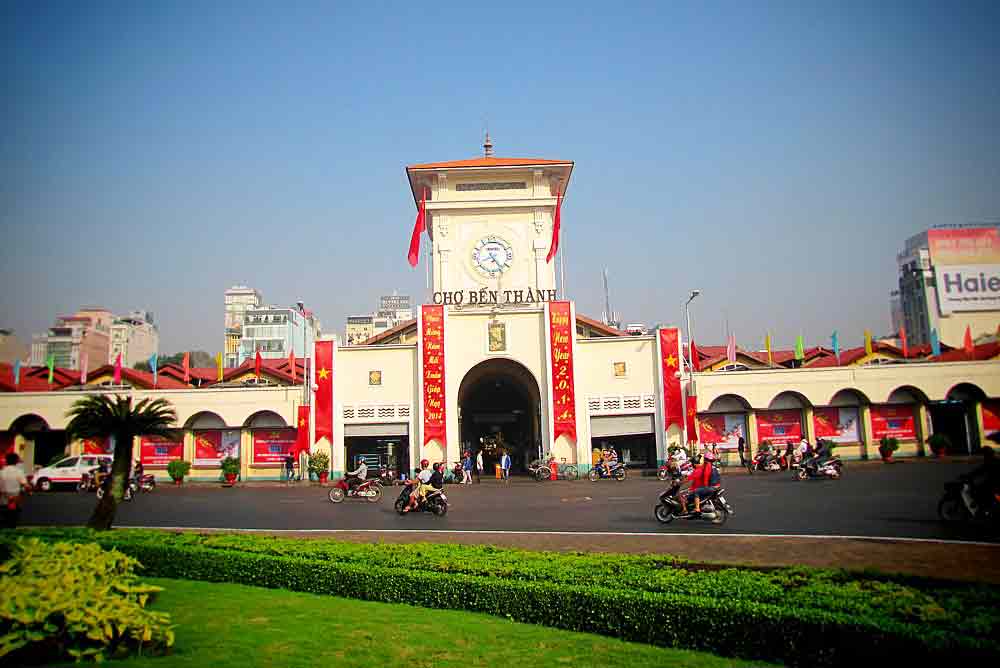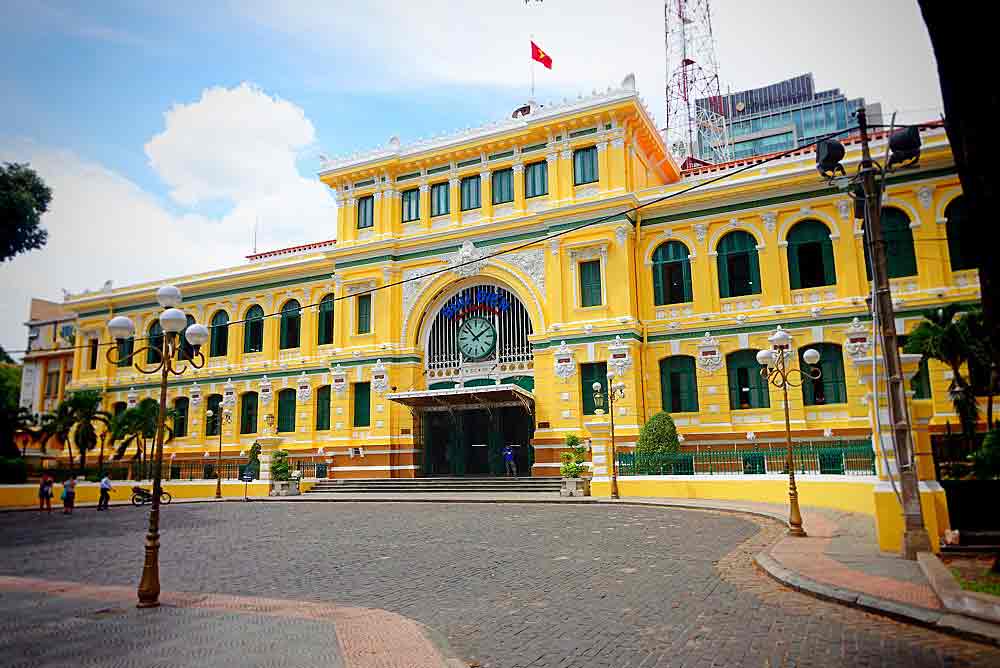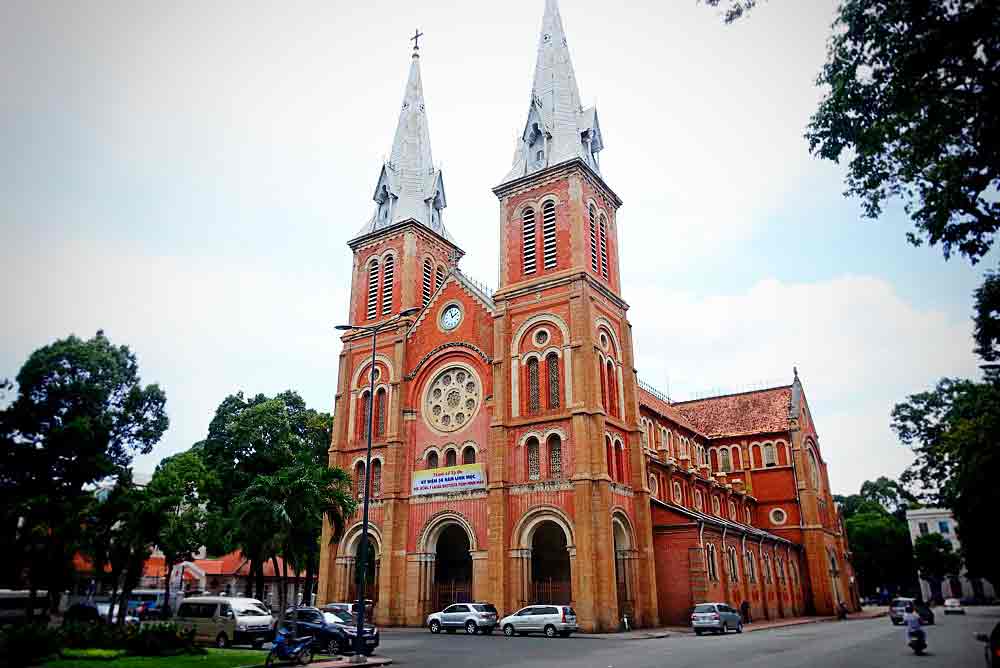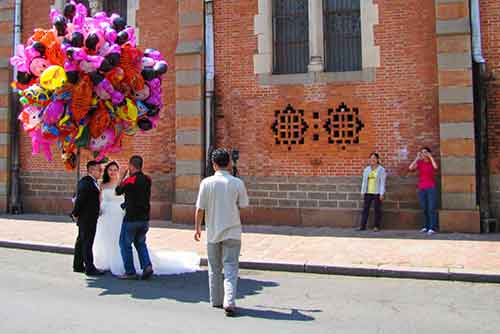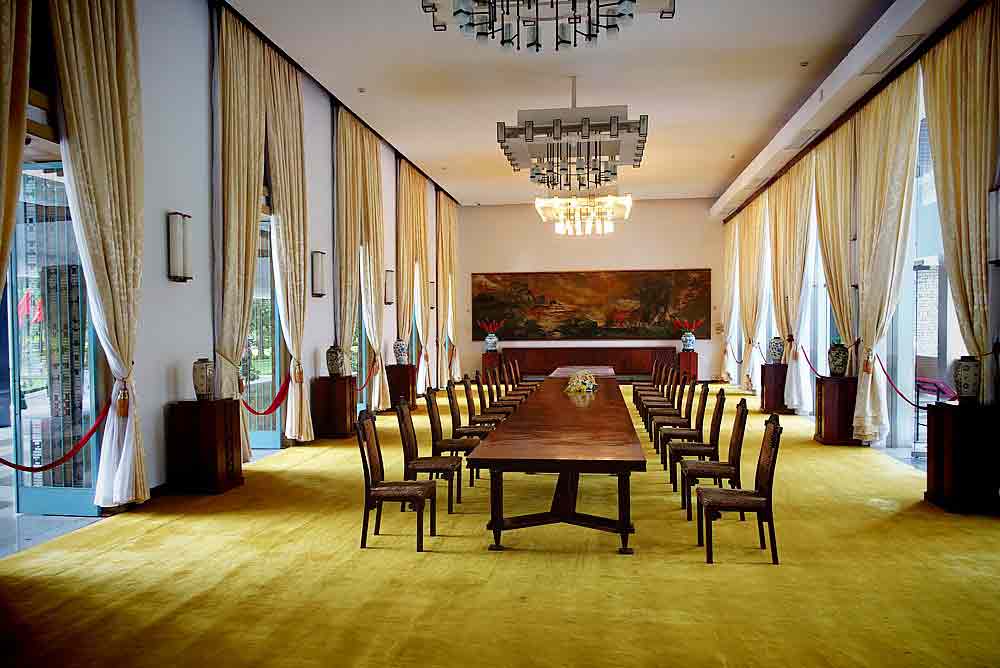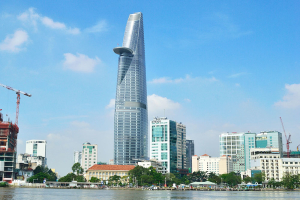There are so many things to do in Ho Chi Minh City, also known as Saigon, and the city has so many things to offer those who visit here. Sometimes, it’s a challenge to know where to start.
It’s so often the architecture that makes a city, and Saigon certainly has more than its fair share of outstanding structures. These add to the charm and attraction of this dynamic city.
The cityscape is a wonderfully eclectic mix of architectural styles, including French colonial, traditional Vietnamese, Chinese, and avant-garde modern. Some neighborhoods will have a great selection of a certain style. For example, Saigon’s Chinatown has some splendid examples of Chinese-style temples, houses, and shops.
Districts 1 and 3 have a nostalgic selection of French-built buildings. But sprinkled throughout the city are unique and fascinating well-designed modern structures, which add a great variety and interesting contrast to the older ones.
Buildings in Saigon that you should make an effort to see are the magnificent Hôtel de Ville de Saïgon (The old Saigon City Hall), the Municipal Theater (Opera House), the Central Post Office, the Cathédrale Notre-Dame du Saïgon (The Cathedral of Our Lady of Saigon), the Independence Palace (Reunification Palace) and Ben Thanh Market.
Hôtel de Ville de Saïgon (The Old Saigon City Hall)
Saigon’s old City Hall — Hôtel de Ville de Saïgon in French — is today the headquarters of the People’s Committee of Ho Chi Minh City.
The building is located at the end of Nguyen Hue Street, at the opposite end away from the Saigon River. It is perfectly permissible to take photos from the exterior of the building, but note that as the building serves as official government offices, the public is not allowed inside.
It’s a grand old Parisian-style building built by the French in 1908. It is one of Saigon’s best examples of French Colonial architecture. Be sure to take a walk by it at night, when floodlights show off the building at its best.
In front of the structure you will not be bale to miss the large statue of Ho Chi Minh. It’s a new statue and replaces the one that sat in front of the City Hall for many years, depicting Uncle Ho sitting with a book and teaching a child.
Nguyen Hue Street Pedestrian Promenade
In May 2015, the city completed a total refurbishing of Nguyen Hue Street, starting at the City Hall and going all the way to the Saigon River. The street features a pedestrian-only promenade that runs the entire length of the street, complete with water works, ambient lighting, and new trees. It’s a great place to take an evening stroll in one of Saigon’s most historic centers. It’s a bit hot during the day, and not much happens on the promenade anyway, so evenings are definitely a better time to experience it.
You will encounter all manner of street performances, vendors, families out for a stroll, and maybe even a live concert usually held at the river-end of the promenade. Be sure to guard wallets, purses, cameras, and mobile phones, as all the action serves as the perfect venue for pickpockets and snatchers.
The Municipal Theater (Opera House)
The Municipal Theater of Ho Chi Minh City is often also called the Opera House. It’s a charming and elegant structure that adds much to the city’s downtown area. It’s located on Le Loi Street, at the opposite end from Ben Thanh Market.
Construction was completed on the neoclassical-style building in 1897. It was designed by French architect Eugène Ferret, who was inspired by the Garnier Opera House and the Little Palace (Petit Palaise) in Paris. The theater seats 800 people.
The Opera House began its existence as a popular entertainment venue for the French elite. Grand performances were staged here for the French officials assigned to Saigon. During the 1950s the South Vietnam government’s Lower Assembly was housed there. Later, the building was unused and fell into decline.
Restoration of the Municipal Theatre
Fortunately, in 1998, in an effort to return the showpiece to its original grandeur, major restorations were conducted to great effect. Today, the theater is one of Saigon’s most prominent structures.
You can walk up to the building’s entrance and try to go inside. Often, the guards will just look at you and at most, will simply wave you away if access to the building is closed at the time. It’s a very photogenic building and well worth it to try to get to see the interior.
As with the Old City Hall (People’s Committee Hall), the Opera House is quite spectacular at night, when floodlights give it an amber glow, causing the theater to stand out beautifully against the Saigon night.
Hotel Continental Saigon
The Hotel Continental Saigon is a historical hotel located on Dong Khoi Street just to the side of the Opera House (Municipal Theater). It was built in 1880 by Pierre Cazeau, a construction materials manufacturer who lived in the city.
It is named after the esteemed accommodation in Paris by the same name. The hotel was built to lodge French visitors to the city with the luxurious quarters that they were accustomed to in Paris, after the arduous trip from France to Saigon.
The Continental is a Movie Star
The hotel was the inspiration for scenes in Graham Greene’s novel The Quiet American, about a British journalist and a young American CIA operative. Part of the book’s film adaptations, in 1958 and 2002, were filmed on location there. The Continental is also a leading scene location for the Academy Award-winning movie Indochine.
It its past, the Continental served as a venue for novelists, journalists, politicians, and business leaders to keep up with the political and business topics of the day.
After Vietnam’s renunciation in 1975, Jacques Chirac, who was mayor of Paris at the time, Malaysian Prime Minister Mahathir Mohamed, and a group of other world leaders met at the hotel to exchange views on the future of the nation.
Throughout its history, the Hotel Continental Saigon has undergone renovations and name changes and currently has 80 guest rooms. If you would like to stay at this historical hotel, you can get good rates at Agoda, a hotel booking service that I use and recommend.
Rex Hotel
The Rex Hotel is another of the city’s grand and noble hotels. Situated on the corner across from the old Saigon City Hall, the Rex commands an impressive presence.
Take a break from all that walking and have a drink or a meal at the bar on the top floor. It’s open to the public and you would be welcome there whether or not you are staying at the hotel. From here you can get some great views and photos of the surrounding area. This is Saigon’s most attractive intersection, in my humble opinion.
The hotel began its existence as a commerce center and garage in early 1927, which was in place until 1959. The center showcased the European car Citroën. Then, efforts began to convert the building into a hotel, which also included three movie theaters, a large reading room, and a dining facility.
The first guests at the hotel were U.S. Army soldiers from the states of Washington and North Carolina, sent to Saigon as part of an army helicopter and transportation unit in 1961.
The Rex During the Vietnam War
Later, during the war in Vietnam, the hotel housed the American Forces Information Service, and it quickly became a favorite hangout for U.S. military leaders. It was where the Information Service delivered daily press briefings, known as the “five o’clock follies,” to foreign correspondents.
By war’s end in 1975, the complex, known as the Rex Trading Center, was owned by the government’s SaigonTourist, a primary travel and accommodations company in Saigon. A few years later, the building was called Ben Thanh, which it is still called by some older Vietnamese to this day.
In 1986, it was rebranded and trademarked as the “Rex Hotel.” It has 284 guest rooms, meeting facilities, a large reception room often booked for weddings and other large events, six restaurants, a luxury spa, a respectable cafe, and a bar.
Major brands are sold in shops on the ground floor, such as Polo, Bulgari, Chanel, and Polo.
Ben Thanh Market
The Ben Thanh Market is a symbol of the city and one of its most popular locations for visitors to Saigon. It’s a fun place to visit and you can see all manner of wares for sale in the stalls inside during the day, from early in the morning until 6:00pm.
After that, the market is the home of Saigon’s famed night market, held outside the building. The night market’s stalls are set up every evening, rain or shine, at 7:00pm and taken down again late at night. In addition to clothing, lanterns, jewelry, and handicrafts, there are many good places to eat at the day and night markets.
Both the day and night markets are great venues for photography, especially of the wide mix of people you can see there.
The market traces its roots to 1859, when the French established its predecessor at the site of the Gia Định citadel. A fire ravaged the market in 1870 and was rebuilt, becoming the largest market in the city. However, the market was moved in 1912 to its current location at the end of Le Loi Street. The building underwent a major renovation in 1985.
A Note of Caution When Visiting the Ben Thanh Market
Be cautious if you shop at the Ben Thanh Market, day or night. Nothing there is authentic, and shoppers are often highly overcharged for inferior quality items. Be sure to hone your bargaining skills before shopping there. Offer less than half the original asking price and go at most to the half-way point. Even then, you are most likely still paying too much.
The market is better for taking in the spectacle than for purchasing souvenirs. If you see something there that you really do want, try stepping down one of the streets leading off to the side from the market. There, you will likely find much better prices because these shops are off the main path from the market.
The Central Post Office of Ho Chi Minh City
The Central Post Office of Ho Chi Minh City is an outstanding French-style structure that serves as a magnificent example of French colonial architecture in Saigon.
The distinguished old landmark was constructed between 1886 and 1891 and resembles a classical French railroad depot.
It is still a fully operating post office today, in fact Saigon’s largest and busiest, but also serves as a popular tourist attraction. Feel free to walk inside, as it’s open to the public.
Some of the most popular characteristics of the building’s interior are the large old maps of Vietnam and the famous portrait of Ho Chi Minh painted on the walls of the tall domed ceiling. It’s perfectly fine to take photographs inside the building.
In the times prior to mobile phones and extensive Internet-based services, many residents and visitors used the post office for telephone, Internet, and fax services. It is located on Dong Khoi Street just down from the Municipal Theater in the opposite direction from the river.
Just across the street from the post office is Saigon’s Roman Catholic Cathedral.
Cathédrale Notre-Dame de Saigon (Our Lady of Saigon Cathedral)
The Our Lady of Saigon Cathedral is another one of the city’s jewels. It is located on Dong Khoi Street just across from the Central Post Office.
It was built by the French between 1877 and 1880 in the Romanesque style, with some additional Gothic qualities added for ornamental purposes. One of the most interesting facts about the cathedral is that practically all of the building materials needed to construct it were painstakingly imported from France.
The cathedral was partially damaged during the war so some of the current elements were created in Saigon for the propose of repair.
The cathedral had stained-glass windows, also made in France, but sadly, they were destroyed during World War II. Its interior is very humble, in contrast to most European cathedrals of the same size and design.
Another notable component of the cathedral are the two bell towers at the front. These towers are each 190 feet (58 meters) tall but weren’t added until 1895, 15 years after the completion of the original structure. The towers house three bells each, which ring on special occasions in the Christian faith.
Be sure to also visit Paris Park, situated just in front of the cathedral, which is a popular hangout for locals and tourists alike and always makes a good place to people watch. The statue of Mary that you see there was placed in 1959 by the then bishop of Saigon, Joseph Pham Van Thien, who ordered it while he was in Rome for a conference at the Vatican.
You will see many soon-to-be-married couples having their wedding photos taken with the cathedral as a backdrop.
If you are interested in seeing a service, Mass is said in English every Sunday at 9:30am.
The Independence Palace (The Reunification Palace)
One of the buildings I find most interesting in Ho Chi Minh City is the Independence Palace. Some people call it the Reunification Palace, usually based on political leanings.
If you like Avant-guard architectural design, then you should certainly include this fascinating place on your itinerary.
The Independence Palace was the home and workplace of South Vietnamese President Nguyễn Văn Thiệu.
It’s an imposing structure, sitting on a large, gated compound at the end of the elegant Lê Duẩn Street and Nam Ky Khoi Nghia Street. It was built from 1962 to 1968 and was designed by Vietnamese architect Ngô Viết Thụ, who trained in Paris.
Construction began after the existing structure on the site, Norodom Palace (named after the king of Cambodia) was heavily damaged by two rebel South Vietnamese fighter pilots who bombed it in an attempt to assassinate South Vietnam’s first president, Ngô Đình Diệm, in 1962.
Both the interior and exterior of the palace have a clean and minimalist design, and the furnishings are simple yet graceful.
The palace became a symbol for the fall of Saigon in 1975, after Soviet-made tanks driven by North Vietnamese Army soldiers crashed through the front gates. Soon after, the transfer of power from South to North took place inside.
The building is a museum today, with all the rooms set up exactly as they were when it served as the presidential palace and South Vietnamese government offices.
The palace is open for visits Monday through Friday from 7:30 – 11:00am and from 1:00 – 4:30pm, as long as official receptions or ceremonies are not taking place at the time. Admission is 30,000 dong (about US$1.40) for adults and 3,000 dong (about US$.40) for children.
Bitexco Financial Tower
A true landmark building that can be spotted from just about any direction in Saigon, the Bitexco Financial Tower is quite a unique skyscraper. It is located in the city’s Central Business District just off Nguyen Hue Street, close to the Saigon River.
It opened in October 2010. The building was designed by Venezuelan-American architect Carlos Zapata, whose main office is in New York City. Zapata drew inspiration for the building’s design from the lotus, the national flower of Vietnam.
It makes for an intriguing visit for travelers in itself, but a major attraction here is the Saigon Skydeck, a large observation deck toward the top floor. An express elevator whisks you to the top of the tower, where stunning photos of the city can be taken.
The Skydeck is open daily from 9:30am to 9:30pm, with last ticket sales at 8:45pm. The entrance fee is 200,000 dong, about US$9.35.
The tower has 68 floors and reaches a height of 860 feet (262 meters), once making it the tallest building in the city. This is an accolade was held until 2017, when a taller skyscraper, Landmark 81, opened in Binh Thanh District.
A unique feature of the building is what is Vietnam’s first helicopter pad. It shoots out 72 feet (22 meters) from the base of the tower and is capable of holding a helicopter weighing under three tons. It’s supposed to be a lotus flower’s petal. In the years since the building has opened, I have never seen a helicopter land there, however.
Within the building are offices of various companies, restaurants, retail space, and a cinema.
There is also a popular bar and ice-cream shop for you to enjoy some refreshments. It’s also a great place to get some views of the city, as you can see for miles from the windows. Don’t expect bargain prices typical of other attractions in Southeast Asia, however. Prices are comparatively on the high end.
The Bitexco Financial Tower has an official website that provides more information and a current list of special events, as well as a page specifically detailing the Saigon Sky-deck.
Wes is originally from Florida, but has been living and working in Vietnam since 2008. He has traveled extensively throughout Southeast Asia and enjoys taking photographs and writing about his experiences in order to share with others. See his story or feel free to contact him.


